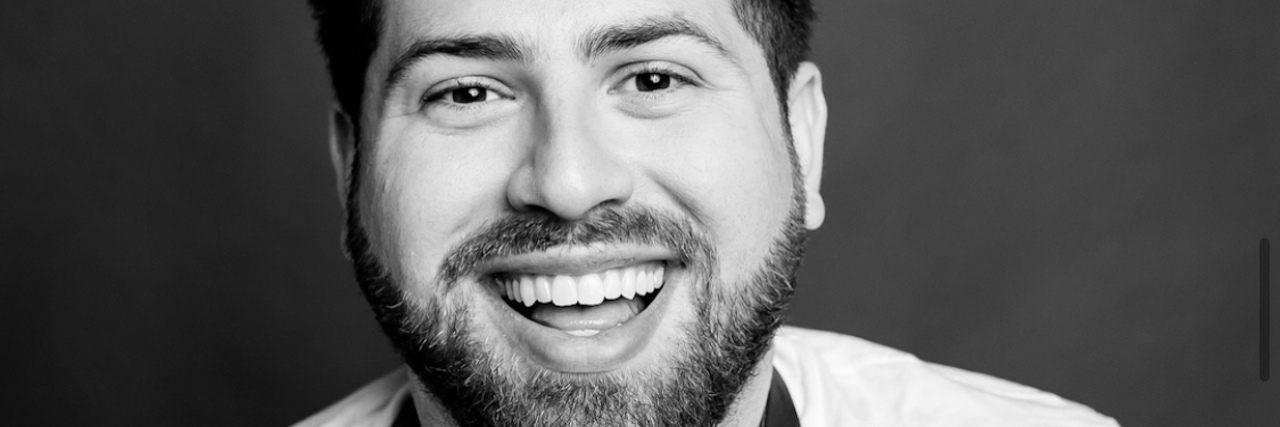You Need to Know How Common Eating Disorders Are Among Men
Editor's Note
If you live with an eating disorder, the following post could be potentially triggering. You can contact the Crisis Text Line by texting “NEDA” to 741741.
Thirty million Americans will get an eating disorder at some point in their lives. Ten million of them identify as male.
I remember hating my body as early as 8. As my T-shirt clung to my body in the pool, I told people I sunburned easily as an explanation for wearing it.
At 13, I distinctly remember a shift in my relationship with food. I always had disordered eating habits, but in early adolescence, I realized I was binge eating.
Popular narratives cast thin white women as the only victims of eating disorders. But consider this: one in three people who struggle with an eating disorder identify as male. Men oftentimes don’t seek help because of gendered stigma and rigid societal standards for masculinity.
For men, the eating disorder experience can be lonely, confusing and isolating. My struggle was glossed over. My family and doctors said I was “just growing,” but I had binge eating disorder, the most common eating disorder that occurs at three times the rate of anorexia nervosa and bulimia nervosa combined.
The “growing boy” narrative followed me through my teenage years. I was 16 and weighed more than what doctors deemed “healthy,” triggering a two-year restriction and dieting period. When I got to college, the “freshman 15” unraveled into something more insidious. I’d go to a friend’s place for dinner only to leave the hangout early and order more food to my own room. Nobody knew what I was doing, and I had nobody to talk to.
In adulthood, I was taking sleeping pills during the day so that I would sleep instead of binge eat. It felt like the only way to stop myself from eating more. This went on for months.
Exhausted and miserable, I went to get help. Though I shed weight through incredibly unhealthy and debilitating eating behaviors, my doctor congratulated me. It reminded me of the countless doctor visits I’d taken throughout my youth, where I was told I was a growing boy, which somehow meant I couldn’t possibly have an eating disorder.
We need to dismantle the current model of masculinity and encourage boys and men to advocate for themselves. Just like people who identify as female, we pay attention to our bodies and what people say about them. We need to give boys the tools to be self-aware. The National Eating Disorders Association (NEDA) has a screening tool to assess whether you should seek professional help. Let’s help boys and men feel safe enough to tell someone when they’re struggling — encourage them to reach out to a helpline. And when early intervention is critical to recovery, we must help them find professional support and treatment as early as possible.
To be sure, this narrative is changing, but when eating disorders have the highest mortality rate of any psychiatric diagnosis, it needs to change quicker.
Now, I know I am not alone in my struggle. Of the 30 million Americans with eating disorders, 10 million are men. Nationally, there is a movement gaining momentum. The National Eating Disorders Association (NEDA) announced it would merge forces with the National Alliance of Men with Eating Disorders (NAMED), and people are realizing the dearth of resources available for men who desperately need it.
It’s National Eating Disorders Awareness Week, and the theme is Come As You Are: Hindsight is 2020. We are reminded that all eating disorder stories are valid, especially from marginalized voices. No matter who you are, what you look like or how you identify, share your story. The more boys and men know about eating disorders, the more they can reach out for help.
Eating disorders can affect anyone. They do not discriminate. Let’s acknowledge the barriers stopping men from speaking up and getting help early and work together to support all victims.
Ryan Sheldon is a model and motivational speaker.
Photo by AllGo – An App For Plus Size People on Unsplash

